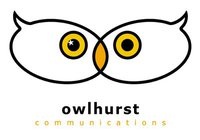 In the latest research commissioned by the Publisher Research Council (PRC), conducted using the global Touchpoints model developed by TNS Kantar Germany that measures a total of 23 consumer touchpoints, print advertising cracks the top 10 in the automotive category, placing second, clipped only by Television, in the ‘Paid For’ touchpoints.
In the latest research commissioned by the Publisher Research Council (PRC), conducted using the global Touchpoints model developed by TNS Kantar Germany that measures a total of 23 consumer touchpoints, print advertising cracks the top 10 in the automotive category, placing second, clipped only by Television, in the ‘Paid For’ touchpoints.
‘Touchpoints’, a robust quantitative study comprising 1,000 respondents across seven major metro areas conducted in October and November 2018, reveals that in the automotive industry, print advertising scores highly on key touchpoints driving this category. In fact, Television and Print are the only two media platforms (paid for touchpoints) in the top 10 that is mainly dominated by ‘earned’ touchpoints.
 “It is the responsibility of the PRC, through numerous investigations and research, to provide irrefutable proof that READING, whether online or on paper, delivers the highest brand cognition and recall. This we have consistently proved over the past two years, that the written word delivers the highest Return on Investment (ROI), whether used independently or in conjunction with TV,” says Pete Langschmidt, consultant to the PRC.
“It is the responsibility of the PRC, through numerous investigations and research, to provide irrefutable proof that READING, whether online or on paper, delivers the highest brand cognition and recall. This we have consistently proved over the past two years, that the written word delivers the highest Return on Investment (ROI), whether used independently or in conjunction with TV,” says Pete Langschmidt, consultant to the PRC.
The central premise behind the touchpoint survey is that brand equity is based on a lifetime of experience with a brand. Touchpoints measures this total brand reservoir vs the interaction with the “touchpoints” within the last three months. The “earned” touchpoints are by far the most powerful in any category. So, the fact the that there are more Toyotas and VW’s on the road and sold each month, just as there are more people drinking Black Label than any other beer in pubs, is a way more powerful indicator of brand love and purchase behaviour than any other touchpoint, including advertising or word of mouth.
The impact of the experience can be measured by using the elements of ‘recall’. We should be asking how many people recall experiencing the touchpoint, and ‘the quality’ thereof and how the experience impacts consumers’ attitude towards the brand. For example, value for money and high safety standards are the key drivers of brand equity in the auto market, supplemented by trust, comfort as well as badge effect. Consumers consider advertising to be less important in driving equity/brand desire.
In the automotive category, the research found that almost two-thirds (64%) of the respondents are reading newspapers on a weekly basis; four in ten (42%) are reading magazines in comparison to the 52% and 24% respectively in the Establishment Survey of Jan-Jun 2018.
The touchpoint list consists of 23 Paid For, Owned and Earned touchpoints. The automotive market sees a very high (22%) of brand equity that is driven by recent touchpoint experiences. The top ten touchpoints contribute 71% of overall impact on brand equity where Print is an impressive number nine overall (out of 23). Most of the top ten are Earned touchpoints with Social Media being the only Digital touchpoint in the top ten. It stands to reason the actual vehicle on the road is the best touchpoint for any brand – which the research demonstrates.
*Moving vehicle – paid for advertising (eg. buses and taxis).
Print is the second highest Media/Paid For touchpoint after TV that drives the key touchpoints in the automotive industry. Combined, media accounts for 27% of the impact, similar to all Owned touchpoints which includes test drives, showroom, and car dealer staff amongst others,” explains Langschmidt.
Relative to other media or ‘Paid For’ touchpoints, Print is extremely efficient and delivers five times more impact for its investment in comparison to radio, for example, providing a 1:1 ratio. Even though print only has a 3.8% share of advertising spend, the platform delivers a massive 19.5% share of impact.
There are great synergies between Print and Television. A TV and Print combination yields a 17% uplift whereas this compares to only 12% for TV and Radio. Most notably, TV and Online with no Print yields weaker results than TV on its own, indicating a TV to digital strategy in this category without Print is ineffective.
“In almost every instance the Television and Print combination provides a better impact than a Television/Radio combination,” says Langschmidt.
“The PRC has been investigating the inherent strengths of the written word for a few years now. This ‘Touchpoint’ research goes a long way in proving that Print is an extremely efficient medium, particularly in the automotive category and when combined with a platform like Television delivers exceptional results.
Automotive brands are welcome to make contact with us in order to see how individual brands performed (in a broad sense) across all the various touchpoints.”
For additional information on this or any other research commissioned by the PRC, please make use of the PRC’s website http://www.prc.za.com/.
